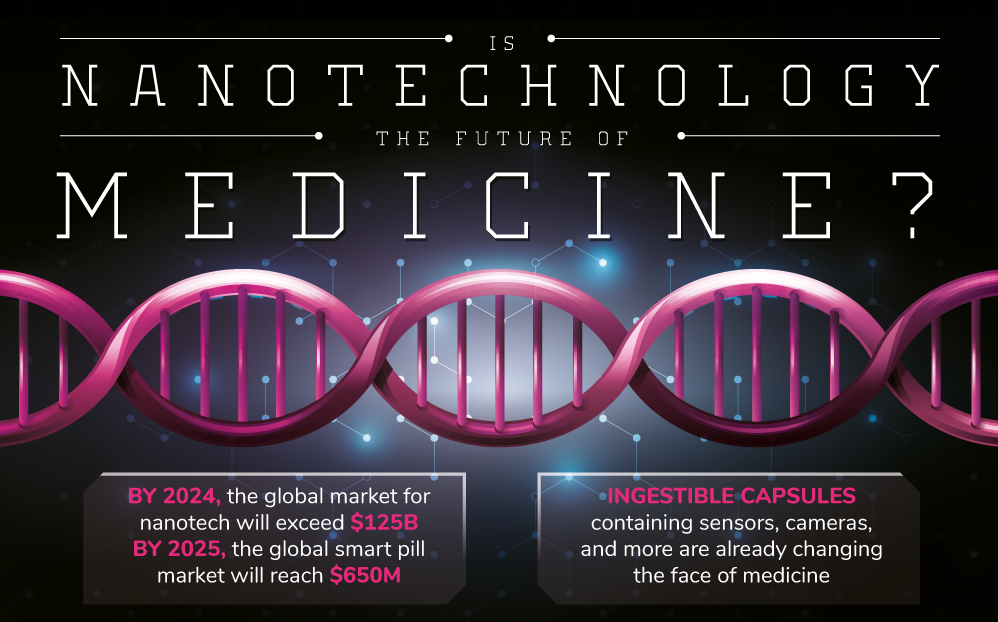Medicine, from its origins thousands of years ago all the way to today, has undergone some significant changes as technology and knowledge of the human body have gotten better. One of those improvements being made right now is having tiny, pill sized robots inside your body helping and healing your body in many new and interesting ways. Vibrating capsules in the gut can help promote muscle contractions to jumpstart digestion and can treat constipation without severe side effects, dose tracking pills relays data about which drugs have been taken, when they were taken and how much was taken, and in 2001, the ingestible camera known as PillCam became the first FDA approved smart pill.
Other than having pills that can track, record, and help speed healing processes, nanobots will relatively soon be able to perform what used to be high risk or high difficulty surgeries very quickly without any risk. A few examples of surgeries like this are eye surgeries, with the nanobots injected through a needle into the eye and can control the nanobots using specialized magnetic fields, nanobots can enter the bloodstream and drill through blockages in arteries and break up plaque, nanobots resembling unfolded cubes can grab tissue samples by folding up, holding the samples inside the cube until they are retrieved by awaiting doctors, and “DNA origami” robots that target cancerous cells without harming healthy tissue, showing significant results in as little as 2 weeks.
Another use for nanobots is for vaccine patches, bandages, and microscopes. Pretty soon, patches made from thousands of silicon microneedles, making transporting and administering vaccines easier than ever. Bioabsorbable bandages, made from hydrogel, can be left on until they dissolve, and a new smartphone- app can detect nanoscale particles of norovirus in water.
Find out the challenges for the future of nanotechnology and how it’s affecting medicine here.


